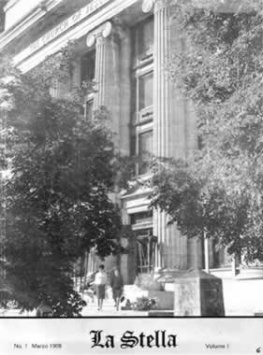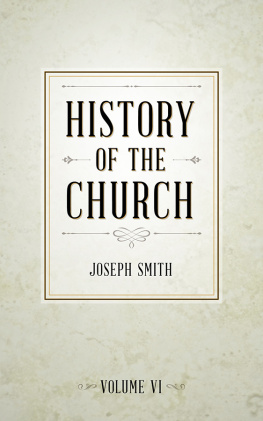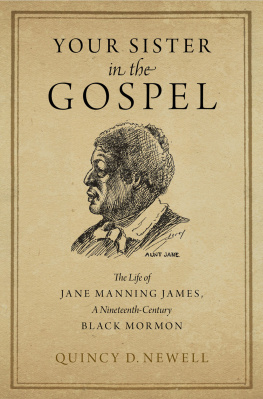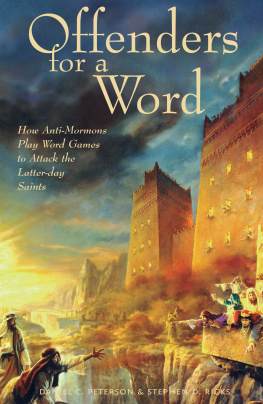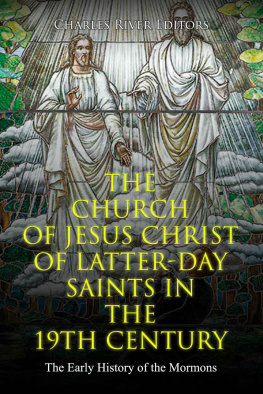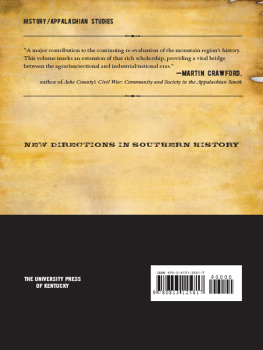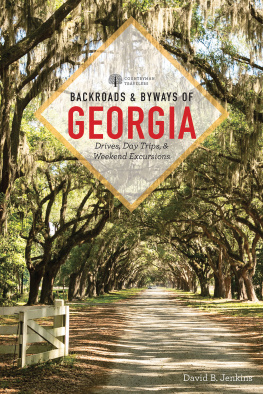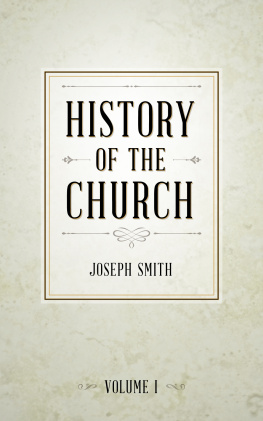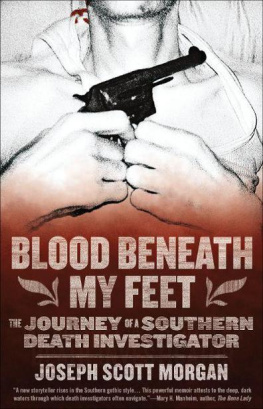Acknowledgments
It was 1998 when I first learned of Elder Joseph Standings murder. An undergraduate history major at Kennesaw State University, I had been granted the honor of cataloguing the Bowling C. Yates Papers, now featured in the Georgia History Collection of the KSU Archives. As Yates was the first superintendent of Kennesaw Mountain National Battlefield Park and the man chiefly responsible for the parks early development, his papers deserved organization, and that became my responsibility. So between classes, I huddled in one corner of a library storage room and attempted to make sense of a lifetimes worth of documents. During breaks, I entertained myself by reading his field notes, recorded in small, cramped handwriting in compact, pocket-sized journals. A keen student of Georgia history, Yates enjoyed a good story, and his journals contained dozens of them, conveyed to him by informants he met as he traveled the state. One of those stories drew my attention, becoming the topic of my dissertation and claimingso fara good twenty years of my life. The storyteller, an old man from north Georgia, confided to Yates that he had once participated in a Mormon massacre. Yates did not afford the claim serious consideration; in fact, he dismissed the account as the product of a damn liar. I, on the other hand, was captivated. Mormons? Massacre? In north Georgia?
It was at Kennesaw State University that I first learned to do historical research. I am eternally grateful to Thomas A. Scott, who introduced me to the challenges and pleasures of archival research and taught me the importance of local history. I could not have asked for a more generous mentor. I was similarly blessed at the University of Georgia, where I benefitted from the wisdom and encouragement of the history faculty. I am especially grateful for the thoughtful consideration of my dissertation committee: John Inscoe, Kathleen Clark, Jim Cobb, and Diane Batts Morrow. With typical humor, Jim Cobb challenged me when I first told him about this study: If this is just about Georgians behaving badly, theres nothing new about that. I appreciate his tolerance and hope Ive convinced him that this is a story worth telling. Kathleen Clark and Diane Batts Morrow provided sound advice and feedback, and I am forever grateful to them. I am singularly indebted to John Inscoe, who shepherded me through the doctoral program, guided my dissertation, and continues to play a central role in my life as advisor, mentor, and friend. My admiration of and appreciation for him are unparalleled. I once told him that he was my role model in all things, understanding full well that I could never achieve his scholarly expertise but hoping that I might manage to emulate his extraordinary kindness. I continue to work toward that goal.
Many others helped me as I researched and wrote this book. I appreciate my friends in the Society of Appalachian Historians who valued and informed this work, especially the late Durwood Dunn, Gordon McKinney, Bruce Stewart, Steve Nash, and Andy Slap. Thanks to Ron Butchart and Amy Rolleri, whose extraordinary work on the Freedmens Teachers Project set the standard for historical research.
I benefitted greatly from the generous support I received from the Joseph Fielding Smith Institute for LDS History at Brigham Young University. It was in Provo that I first met Richard L. Jensen, then a research historian at the institute and now coeditor on the Joseph Smith Papers Project. Thank you, Richard, for making me welcome during my many research trips to Provo and Salt Lake City. I am indebted as well to the archivists, librarians, and staff members at Brigham Young University and the University of Utah.
It was a great privilege to work at the LDS Church History Library in Salt Lake City. Though I am not a member of the church, the very knowledgeable scholars, librarians, and staff welcomed me and patiently endured endless questions and requests for archival materials. In Georgia, I relied upon the expertise of the archivists at the Georgia Department of Archives and History who provided vast collections of court, military, and tax records that inform this book. The public historians at the Whitfield-Murray Historical Society generously shared their knowledge with me, and I am especially grateful to Marcelle Coker, who volunteered to drive me to the site of Joseph Standings murder in the early days of this project.
Numerous individuals have contacted me over the yearsfrom Utah and Georgiato share their own family histories and memories. Patricia Dockery, Karen B. Keeley, Vera Edna Browning Kimball, and Janet Stoddard all reached out and provided me with information that helped me re-create nineteenth-century families, neighbors, and communities. Any mistakes in the genealogies produced are mine and not theirs.
I am fortunate to have found a home at Western Carolina University, where I am surrounded by caring and supportive colleagues. Thanks to Saheed Aderinto, Rob Clines, Andy Denson, David Dorondo, Rob Ferguson, Ben Francis-Fallon, Gael Graham, Alex Macaulay, Libby McRae, Scott Philyaw, Jessie Swigger, and Vicki Szabo. As I tell them all the time, I am so proud to be a member of this faculty. I learn from them and I am inspired by them. Richard Starnes is my dean, my colleague, and my friend, and merits a special thank-you for championing me throughout my professional journey. I am also grateful for the encouragement and support of Jim Lewis, Honor Sachs, Kathy Orr, Rebecca Scheidt, Sue Abram, and Sam McGuire. Former WCU graduate student Beverly Ellis spent long hours transcribing handwritten census records from microfilm and assembling the data that are foundational to this study. I cannot properly express my appreciation for her hard work.
How fortunate I also am to be working with the good people at the University of Georgia Press who have guided me through this process. My editor, Mick Gusinde-Duffy, has supported me from the very beginning, and I am profoundly grateful for both his insight and patience. Thanks to Thomas Roche and Beth Snead and everyone involved in the process of copyediting, design, and production. I appreciate Joseph Dahms careful attention to the manuscript (which involved reining in my extravagant use of commas, among other things). I am grateful for the assistance of Don Larson and Rob McCaleb of Mapping Specialists, Ltd., who took my notes gleaned from census reports, tax records, and missionary diaries and managed to create an extraordinary map of the nineteenth-century mission field in north Georgia.
As I wrote this book about families, I thought often of my own family. My mother did not live long enough to see this book published, but I think she would be so pleased. My father has encouraged me every step of the way, reading endless drafts, offering sage advice, and urging me on when my energy flagged. From him, I have learned what it means to be persistent, resilient, and loyal. In many ways, this is his book, too. My children, Scott and Sarah, are still the best gift I will ever give the world. I hope they realize that my primary goal in life is to make them proud. Through Sarah I gained Kevin, and I am so grateful for him. My sister, Susan, who loves ferociously and unconditionally, always cheers me on. She and her husband, Jay, seem to have forgiven me for not always paying adequate attention to their lives, and I hope they know how much I appreciate that they take better care of me than I do of them. To Lu and Jim Mottley, thank you for the love and laughter, and your sometimes-irrational belief that I would finally finish this book. Your confidence gave me confidence. I am grateful to my cousin Melanie Hall, whose Appalachian journey mirrors my own, and with whom I share a love of these ancient mountains. Thank you, Melanie and Bill, for keeping me grounded.
I am especially blessed to have three granddaughters who are an endless source of joy. To Emily, Laney, and Sophiewho affectionately (and apparently without irony) call their grandmother Dodothis book is for you.


